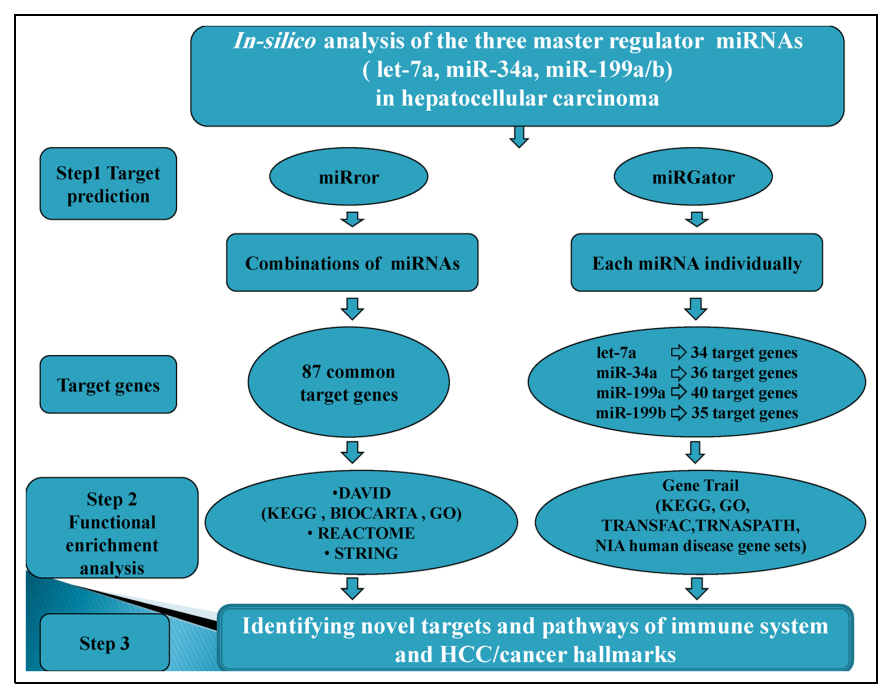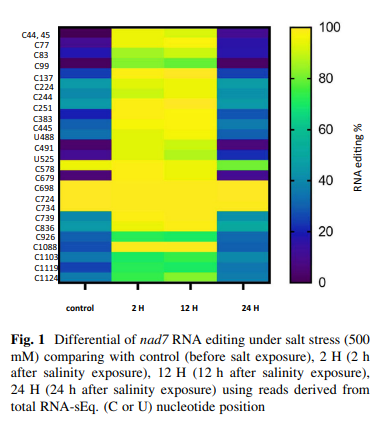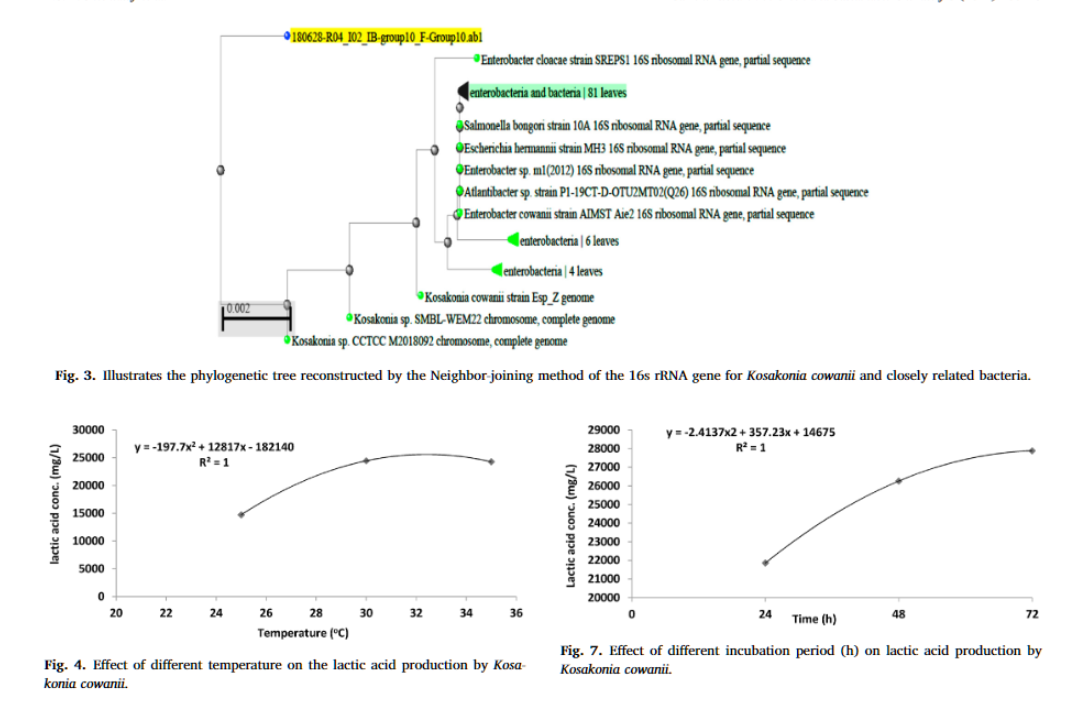
Bioinformatics functional analysis of let-7a, miR-34a, and miR-199a/b reveals novel insights into immune system pathways and cancer hallmarks for hepatocellular carcinoma
Let-7a, miR-34a, and miR-199 a/b have gained a great attention as master regulators for cellular processes. In particular, these three micro-RNAs act as potential onco-suppressors for hepatocellular carcinoma. Bioinformatics can reveal the functionality of these micro-RNAs through target prediction and functional annotation analysis. In the current study, in silico analysis using innovative servers (miRror Suite, DAVID, miRGator V3.0, GeneTrail) has demonstrated the combinatorial and the individual target genes of these micro-RNAs and further explored their roles in hepatocellular carcinoma progression. There were 87 common target messenger RNAs (p ≤ 0.05) that were predicted to be regulated by the three micro-RNAs using miRror 2.0 target prediction tool. In addition, the functional enrichment analysis of these targets that was performed by DAVID functional annotation and REACTOME tools revealed two major immune-related pathways, eight hepatocellular carcinoma hallmarks–linked pathways, and two pathways that mediate interconnected processes between immune system and hepatocellular carcinoma hallmarks. Moreover, protein–protein interaction network for the predicted common targets was obtained by using STRING database. The individual analysis of target genes and pathways for the three micro-RNAs of interest using miRGator V3.0 and GeneTrail servers revealed some novel predicted target oncogenes such as SOX4, which we validated experimentally, in addition to some regulated pathways of immune system and hepatocarcinogenesis such as insulin signaling pathway and adipocytokine signaling pathway. In general, our results demonstrate that let-7a, miR-34a, and miR-199 a/b have novel interactions in different immune system pathways and major hepatocellular carcinoma hallmarks. Thus, our findings shed more light on the roles of these miRNAs as cancer silencers. © 2018, © The Author(s) 2018.



